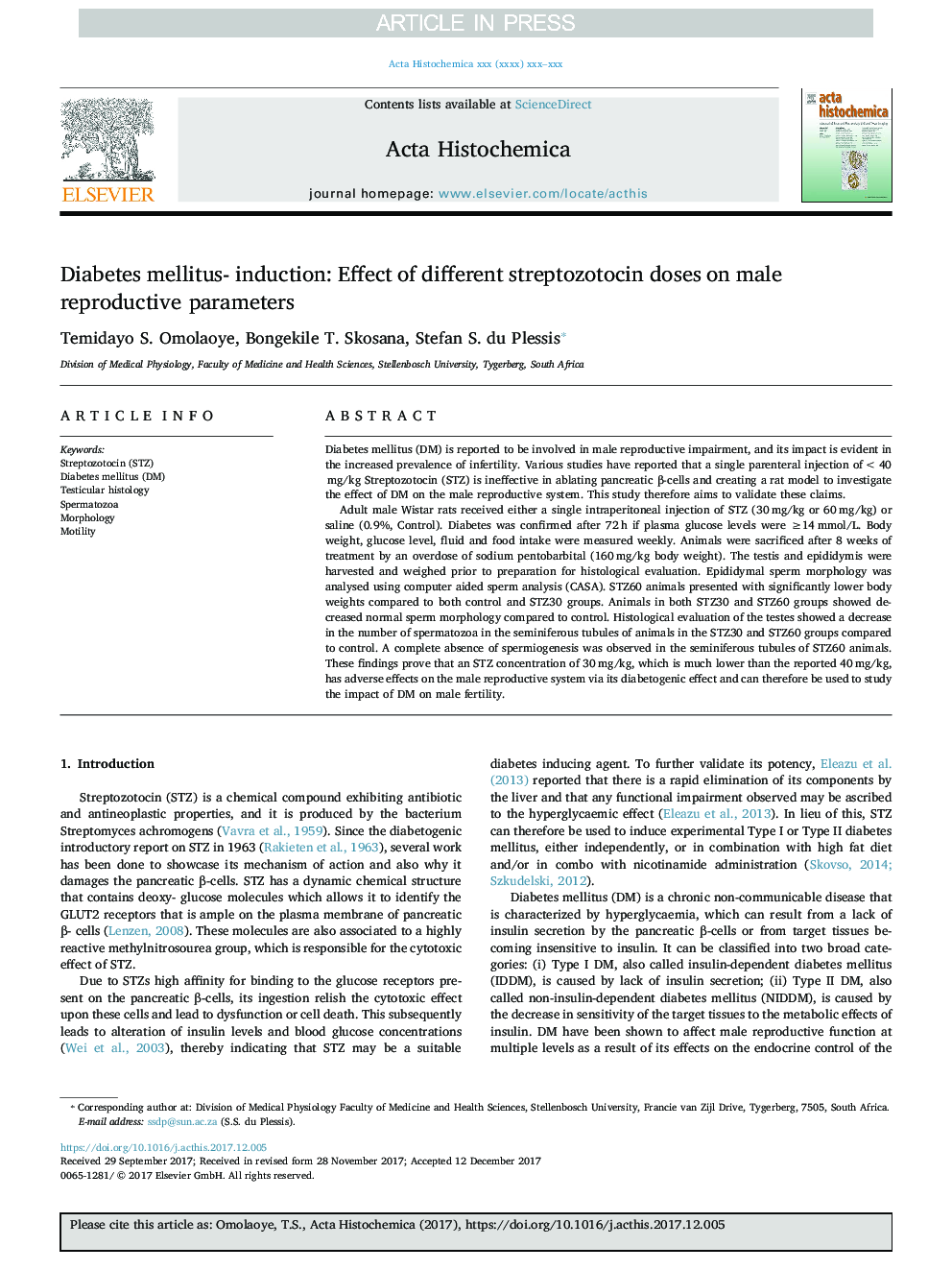| Article ID | Journal | Published Year | Pages | File Type |
|---|---|---|---|---|
| 8287553 | Acta Histochemica | 2018 | 7 Pages |
Abstract
Adult male Wistar rats received either a single intraperitoneal injection of STZ (30â¯mg/kg or 60â¯mg/kg) or saline (0.9%, Control). Diabetes was confirmed after 72â¯h if plasma glucose levels were â¥14â¯mmol/L. Body weight, glucose level, fluid and food intake were measured weekly. Animals were sacrificed after 8 weeks of treatment by an overdose of sodium pentobarbital (160â¯mg/kg body weight). The testis and epididymis were harvested and weighed prior to preparation for histological evaluation. Epididymal sperm morphology was analysed using computer aided sperm analysis (CASA). STZ60 animals presented with significantly lower body weights compared to both control and STZ30 groups. Animals in both STZ30 and STZ60 groups showed decreased normal sperm morphology compared to control. Histological evaluation of the testes showed a decrease in the number of spermatozoa in the seminiferous tubules of animals in the STZ30 and STZ60 groups compared to control. A complete absence of spermiogenesis was observed in the seminiferous tubules of STZ60 animals. These findings prove that an STZ concentration of 30â¯mg/kg, which is much lower than the reported 40â¯mg/kg, has adverse effects on the male reproductive system via its diabetogenic effect and can therefore be used to study the impact of DM on male fertility.
Keywords
Related Topics
Life Sciences
Biochemistry, Genetics and Molecular Biology
Biochemistry
Authors
Temidayo S. Omolaoye, Bongekile T. Skosana, Stefan S. du Plessis,
